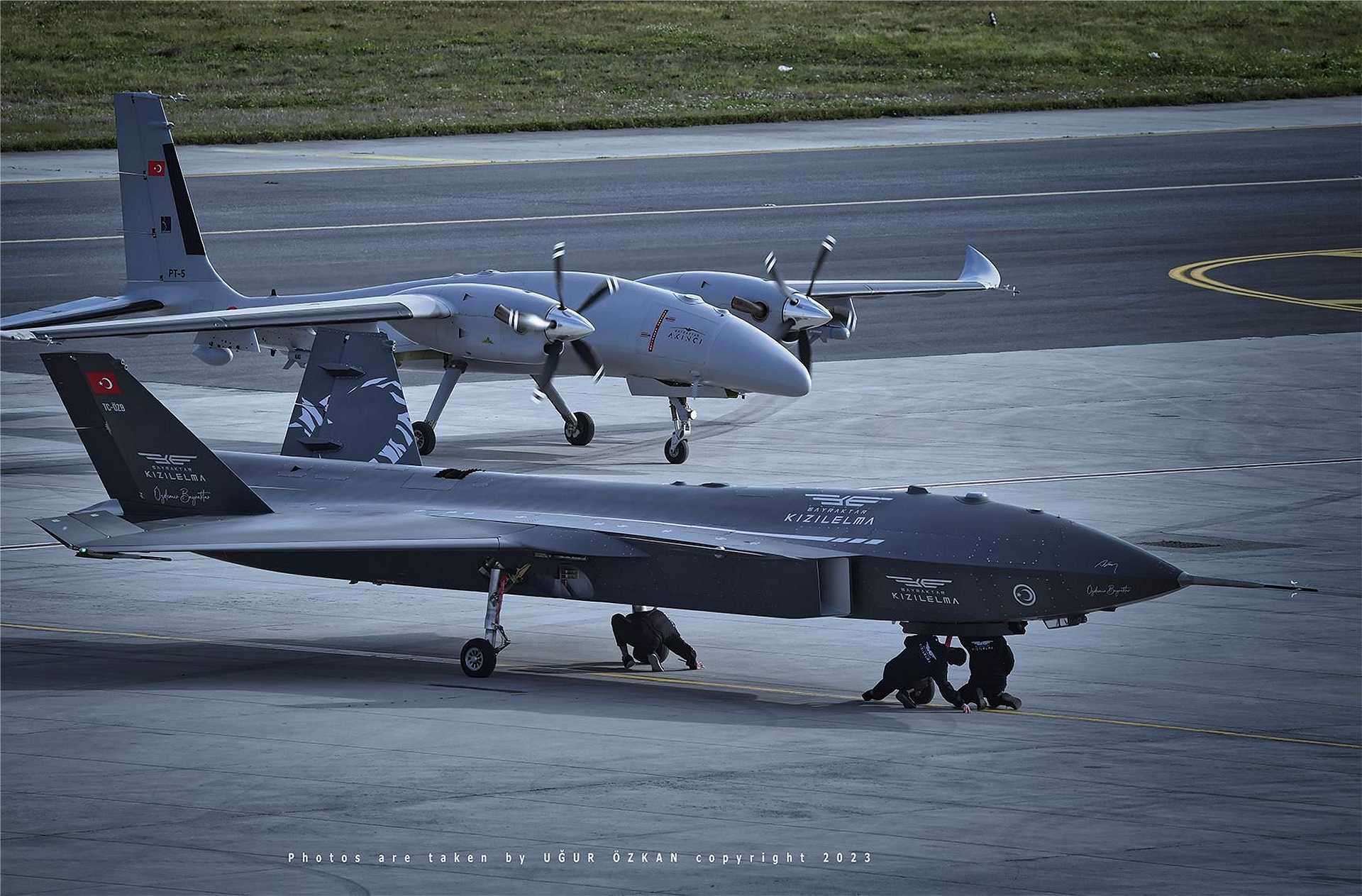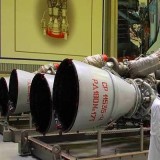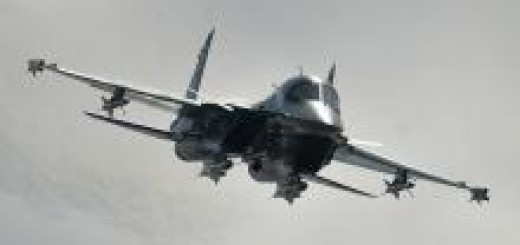Türkiye’s KIZILELMA UCAV with Supersonic Speed and 1.5-Ton Payload Enters Serial Production

{loadposition bannertop}
{loadposition sidebarpub}
Turkey’s KIZILELMA Unmanned Combat Aerial Vehicle (UCAV) has officially entered serial production, marking a significant milestone for the country’s defense technology sector. As reported on the X account of the Turkish Century on January 8, 2024, this announcement reflects Turkey’s growing prowess in developing advanced unmanned aerial systems (UAS), which are set to redefine modern military operations. The KIZILELMA, developed by Baykar Makina, is designed to perform a variety of combat roles, offering a new level of versatility and power for armed forces worldwide. Its introduction will enhance Turkey’s defense capabilities and strengthen military cooperation with several countries.Follow Army Recognition on Google News at this link
Turkey’s KIZILELMA UCAV: A next-generation unmanned combat aerial vehicle designed for precision strikes, with supersonic speed, 1.5-ton payload capacity, and advanced autonomous flight capabilities. (Picture source Ugur Ozkan via X)
The KIZILELMA UCAV is not just another unmanned aerial system—its advanced features place it in a league of its own. While many drones are primarily used for reconnaissance or surveillance, the KIZILELMA is equipped to carry out sophisticated combat missions, such as precision strikes and long-range operations. This makes it a potential game-changer in the landscape of modern warfare, with particular relevance to nations seeking to boost their air power while minimizing the risks associated with piloted missions. It is designed to operate effectively in complex and contested environments, enabling operators to carry out missions with high efficiency and low risk to personnel.
A key element of the KIZILELMA’s design is its flight performance. The UCAV is capable of carrying a payload of up to 1.5 tons (1,500 kg), which can include various types of precision-guided munitions and air-to-ground bombs. This payload capacity is impressive, making the KIZILELMA suitable for a broad range of operations, from tactical strikes to strategic missions requiring heavy ordnance. Its maximum take-off weight is 8.5 tons (8,500 kg), further emphasizing its robust design, which allows it to carry heavy weapons while maintaining superior performance in the air.
The KIZILELMA’s aerodynamics and speed are another area where it excels. The UCAV has a maximum speed of 0.9 Mach, or approximately 1,100 km/h, enabling it to reach targets quickly and evade enemy defenses with agility. In addition to this impressive top speed, it also boasts a cruise speed of 0.6 Mach, or around 740 km/h, allowing for efficient long-range operations. This balance between speed and endurance is critical for ensuring that the KIZILELMA can perform both high-speed strike missions and extended surveillance or reconnaissance flights.
The KIZILELMA’s combat radius is 500 nautical miles (approximately 926 kilometers), which gives it a substantial reach for engaging targets deep within enemy territory. This range is particularly valuable for strategic operations where the target is located far from friendly air bases or ground forces. With a combat endurance of over 4 hours, the UCAV can remain in operation for extended periods, further extending its operational effectiveness during prolonged missions.
Another remarkable feature of the KIZILELMA is its operational altitude. With the ability to reach altitudes of up to 25,000 feet (approximately 7,620 meters), it can operate in airspace that is typically dominated by manned fighter jets. This high altitude capability provides the KIZILELMA with an advantageous position for both surveillance and strike operations, making it a formidable asset in controlling air superiority.
The KIZILELMA is equipped with cutting-edge autonomous flight capabilities, allowing it to operate without the need for direct human intervention in hostile environments. Its ability to perform automated takeoff, flight, and landing adds to its versatility and reduces the risk to personnel. Furthermore, its advanced sensors, including electro-optical/infrared cameras and radar systems, enable it to perform precise targeting, surveillance, and reconnaissance missions, even in adverse weather conditions.
The introduction of the KIZILELMA UCAV is significant not only for its technological innovations but also for the geopolitical implications it carries. As Turkey seeks to deepen its defense ties with countries in the Middle East, Africa, and Central Asia, the KIZILELMA provides a powerful tool for enhancing military capabilities across the region. The UCAV is expected to play a pivotal role in deterrence and defense strategies, especially in areas facing security challenges from extremist groups or foreign interventions.
The KIZILELMA is part of a broader trend in modern warfare, where unmanned systems are taking on increasingly prominent roles. As traditional fighter jets become more expensive to operate and maintain, drones like the KIZILELMA offer an attractive alternative for nations seeking to modernize their military fleets without the prohibitive costs of manned aircraft. Furthermore, the use of UCAVs reduces the risk to human lives, especially in high-risk operations, while maintaining a high level of combat effectiveness.
With its impressive specifications, such as its 1.5-ton payload, 8.5-ton maximum take-off weight, 0.9 Mach maximum speed, and 500 nautical mile (926 km) combat radius, the KIZILELMA is poised to become a game-changer for countries seeking to modernize their air forces. Its advanced autonomous flight capabilities, combined with a substantial 4+ hour endurance and operational altitude of 25,000 feet (7,620 meters), make it an incredibly versatile and lethal weapon system. As Turkey’s defense exports continue to grow, the KIZILELMA is likely to play a central role in reshaping the defense capabilities of the Ummah and beyond, enhancing regional security and solidifying Turkey’s position as a key player in the global defense market.

{loadposition bannertop}
{loadposition sidebarpub}
Turkey’s KIZILELMA Unmanned Combat Aerial Vehicle (UCAV) has officially entered serial production, marking a significant milestone for the country’s defense technology sector. As reported on the X account of the Turkish Century on January 8, 2024, this announcement reflects Turkey’s growing prowess in developing advanced unmanned aerial systems (UAS), which are set to redefine modern military operations. The KIZILELMA, developed by Baykar Makina, is designed to perform a variety of combat roles, offering a new level of versatility and power for armed forces worldwide. Its introduction will enhance Turkey’s defense capabilities and strengthen military cooperation with several countries.
Follow Army Recognition on Google News at this link
Turkey’s KIZILELMA UCAV: A next-generation unmanned combat aerial vehicle designed for precision strikes, with supersonic speed, 1.5-ton payload capacity, and advanced autonomous flight capabilities. (Picture source Ugur Ozkan via X)
The KIZILELMA UCAV is not just another unmanned aerial system—its advanced features place it in a league of its own. While many drones are primarily used for reconnaissance or surveillance, the KIZILELMA is equipped to carry out sophisticated combat missions, such as precision strikes and long-range operations. This makes it a potential game-changer in the landscape of modern warfare, with particular relevance to nations seeking to boost their air power while minimizing the risks associated with piloted missions. It is designed to operate effectively in complex and contested environments, enabling operators to carry out missions with high efficiency and low risk to personnel.
A key element of the KIZILELMA’s design is its flight performance. The UCAV is capable of carrying a payload of up to 1.5 tons (1,500 kg), which can include various types of precision-guided munitions and air-to-ground bombs. This payload capacity is impressive, making the KIZILELMA suitable for a broad range of operations, from tactical strikes to strategic missions requiring heavy ordnance. Its maximum take-off weight is 8.5 tons (8,500 kg), further emphasizing its robust design, which allows it to carry heavy weapons while maintaining superior performance in the air.
The KIZILELMA’s aerodynamics and speed are another area where it excels. The UCAV has a maximum speed of 0.9 Mach, or approximately 1,100 km/h, enabling it to reach targets quickly and evade enemy defenses with agility. In addition to this impressive top speed, it also boasts a cruise speed of 0.6 Mach, or around 740 km/h, allowing for efficient long-range operations. This balance between speed and endurance is critical for ensuring that the KIZILELMA can perform both high-speed strike missions and extended surveillance or reconnaissance flights.
The KIZILELMA’s combat radius is 500 nautical miles (approximately 926 kilometers), which gives it a substantial reach for engaging targets deep within enemy territory. This range is particularly valuable for strategic operations where the target is located far from friendly air bases or ground forces. With a combat endurance of over 4 hours, the UCAV can remain in operation for extended periods, further extending its operational effectiveness during prolonged missions.
Another remarkable feature of the KIZILELMA is its operational altitude. With the ability to reach altitudes of up to 25,000 feet (approximately 7,620 meters), it can operate in airspace that is typically dominated by manned fighter jets. This high altitude capability provides the KIZILELMA with an advantageous position for both surveillance and strike operations, making it a formidable asset in controlling air superiority.
The KIZILELMA is equipped with cutting-edge autonomous flight capabilities, allowing it to operate without the need for direct human intervention in hostile environments. Its ability to perform automated takeoff, flight, and landing adds to its versatility and reduces the risk to personnel. Furthermore, its advanced sensors, including electro-optical/infrared cameras and radar systems, enable it to perform precise targeting, surveillance, and reconnaissance missions, even in adverse weather conditions.
The introduction of the KIZILELMA UCAV is significant not only for its technological innovations but also for the geopolitical implications it carries. As Turkey seeks to deepen its defense ties with countries in the Middle East, Africa, and Central Asia, the KIZILELMA provides a powerful tool for enhancing military capabilities across the region. The UCAV is expected to play a pivotal role in deterrence and defense strategies, especially in areas facing security challenges from extremist groups or foreign interventions.
The KIZILELMA is part of a broader trend in modern warfare, where unmanned systems are taking on increasingly prominent roles. As traditional fighter jets become more expensive to operate and maintain, drones like the KIZILELMA offer an attractive alternative for nations seeking to modernize their military fleets without the prohibitive costs of manned aircraft. Furthermore, the use of UCAVs reduces the risk to human lives, especially in high-risk operations, while maintaining a high level of combat effectiveness.
With its impressive specifications, such as its 1.5-ton payload, 8.5-ton maximum take-off weight, 0.9 Mach maximum speed, and 500 nautical mile (926 km) combat radius, the KIZILELMA is poised to become a game-changer for countries seeking to modernize their air forces. Its advanced autonomous flight capabilities, combined with a substantial 4+ hour endurance and operational altitude of 25,000 feet (7,620 meters), make it an incredibly versatile and lethal weapon system. As Turkey’s defense exports continue to grow, the KIZILELMA is likely to play a central role in reshaping the defense capabilities of the Ummah and beyond, enhancing regional security and solidifying Turkey’s position as a key player in the global defense market.





